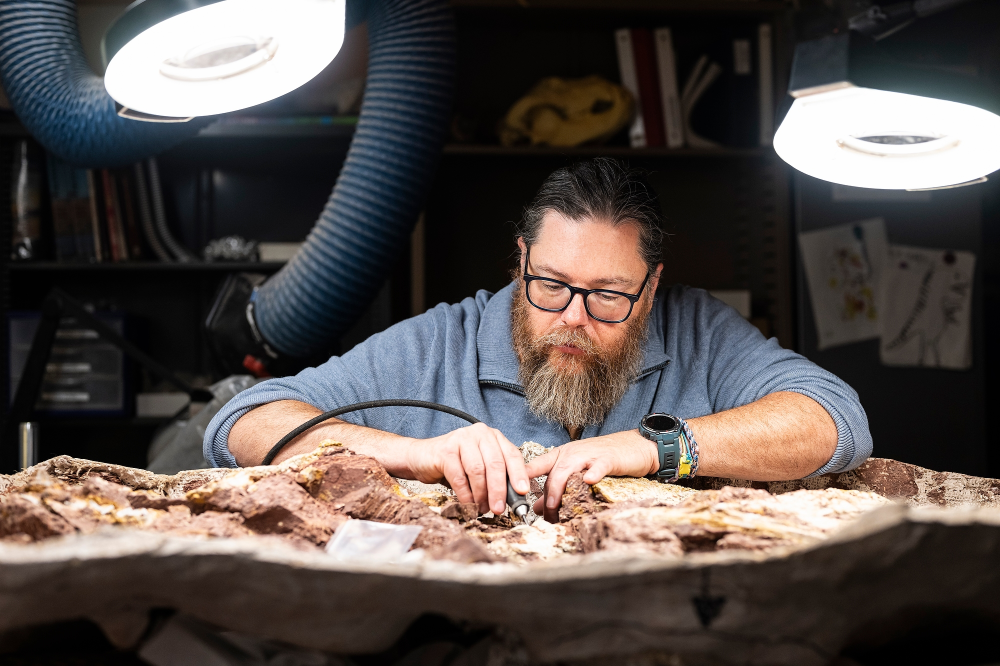The oldest equatorial dinosaur in the world, and North America’s oldest dinosaur, has been described in a new study. Dating back 230 million years, the chicken-sized dinosaur has big implications for our understanding of how dinosaurs spread across the world, pushing back their arrival in the northern hemisphere by millions of years.
The dinosaur, Ahvaytum bahndooiveche, was first discovered back in 2013 in what we now know as Wyoming. Once upon a time, this place was near the equator on the supercontinent Laurasia, which has since fragmented into North America, Europe, and Asia with the breakup occurring between 66 to 30 million years ago.
The fossils were retrieved from the Popo Agie Formation. It took Dave Lovelace, a research scientist at the University of Wisconsin Geology Museum, and his team years to determine that it was a new-to-science species, as well as how old it was. Having only parts of the dinosaur’s legs to work with, it wasn’t easy, but together they’ve established it was likely a very early relative of sauropods – the group that would later give rise to the vegetarian giants like Patagotitan.
Ahvaytum, on the other hand, was no such giant. Its name, inspired by the Shoshone language term for “long ago,” is a hat tip to quite how ancient this creature is. It’s now estimated to have lived 230 million years ago, something researchers were able to work out thanks to radioisotopic dating of rocks in the formation Ahvaytum’s fossils were found in. That puts it on a par with the oldest known Gondwanan dinosaurs, and raises questions about how and when dinosaurs first spread across the planet.

The researchers wanted to evolve their field practices and better respect the land by incorporating the knowledge and perspectives of the Indigenous peoples into their work
Image credit: Jeff Miller/UW–Madison
Being so old – the oldest dinosaur ever found in North America, in fact – means Ahvaytum looked very different from the gigantic relatives that would follow millions of years later. Rather than being a giant, it looked more like what might be the closest living relative to T. rex.
“It was basically the size of a chicken but with a really long tail,” Lovelace said in a statement. “We think of dinosaurs as these giant behemoths, but they didn’t start out that way.”
Ahvaytum’s discovery and age mark a pivotal piece of evidence that shows us dinosaurs were in the northern hemisphere much earlier than previously thought. It’s also made strides in mending the disconnect that has historically unfolded when scientists work among Indigenous communities, becoming the first dinosaur species to be named in the language of the Eastern Shoshone Tribe in collaboration with students and tribal elders at the Fort Washakie school.
“The continuous relationship developed between Dr Lovelace, his team, our school district, and our community is one of the most important outcomes of the discovery and naming of Ahvaytum bahndooiveche,” said Amanda LeClair-Diaz, co-author on the paper and a member of the Eastern Shoshone and Northern Arapaho Tribes.
“Typically, the research process in communities, especially Indigenous communities, has been one sided, with the researchers fully benefiting from studies. The work we have done with Dr Lovelace breaks this cycle and creates an opportunity for reciprocity in the research process.”
The study is published in the Zoological Journal of the Linnean Society.
Source Link: Oldest Equatorial Dinosaur In The World Discovered, Dating Back 230 Million Years